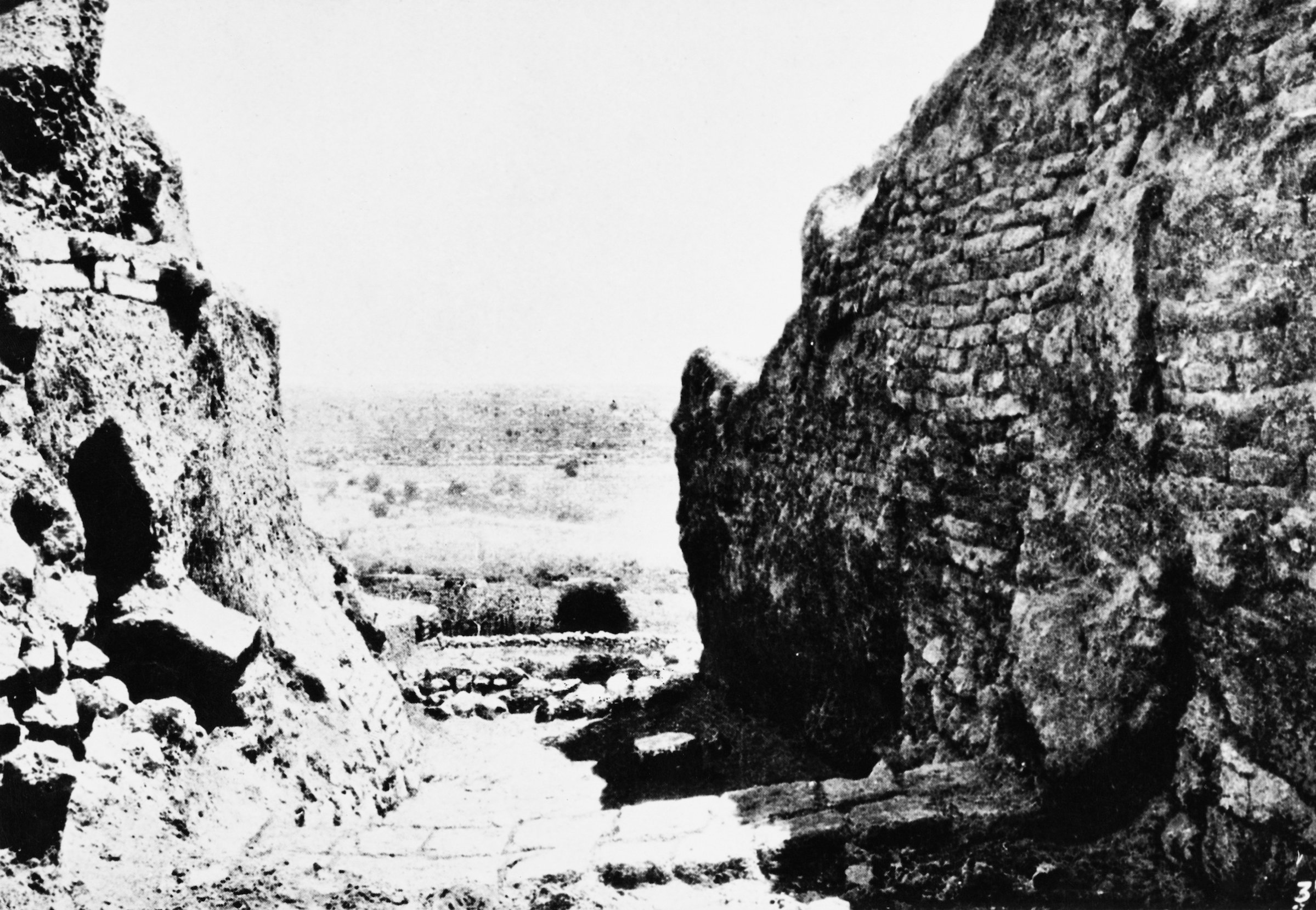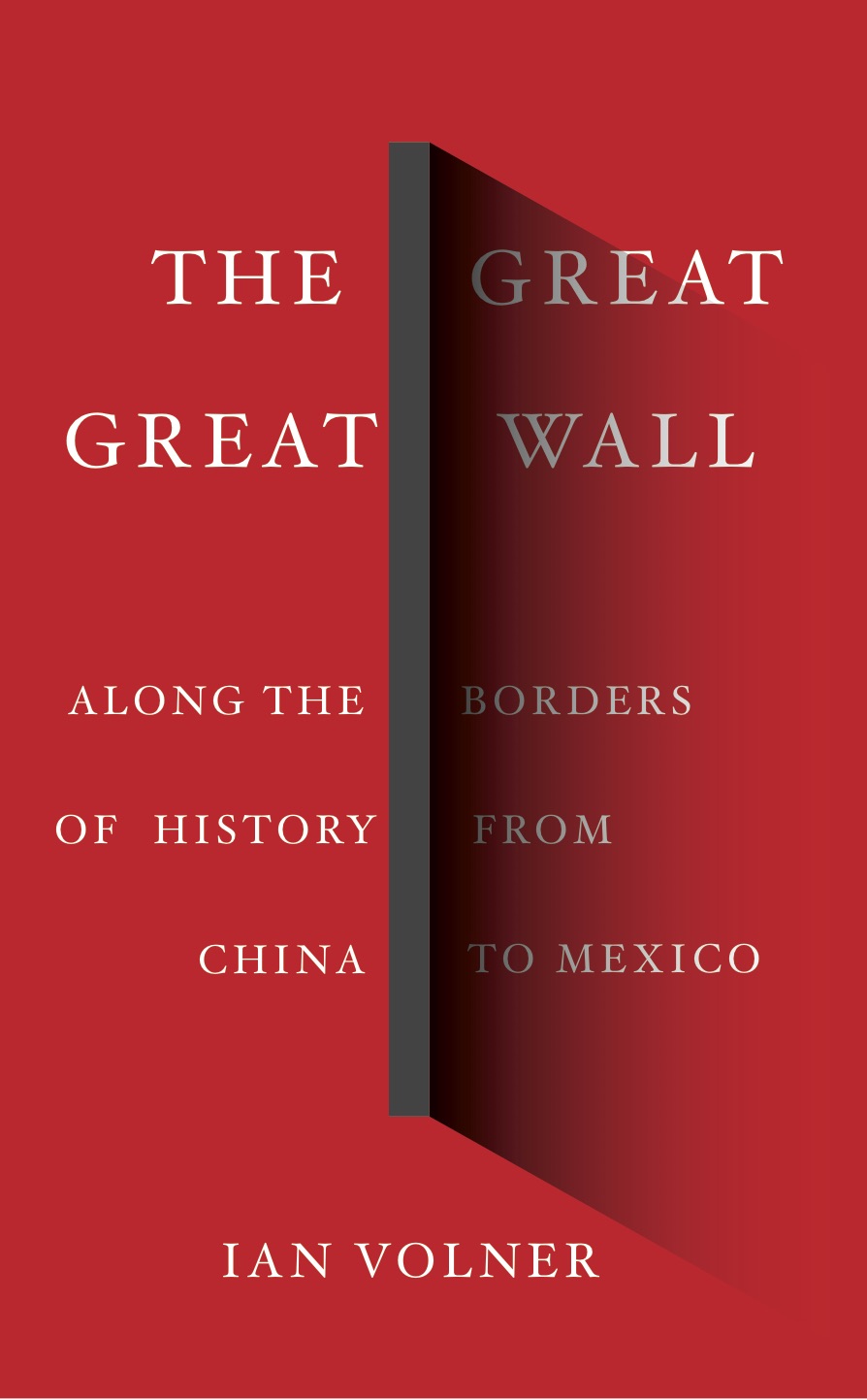
Be it in songs and sermons, or in bricks and mortar, walls are sui generis among the artifacts of human culture. If not quite a precondition of culture as such, they must count among its first fruits, as elemental (or nearly so) as the sharpened stone and the roaring fire. The minute a house’s wooden frame (or the fabric of a tent) is rendered sufficiently sturdy, that membrane might be considered a shield. Restrict the definition to freestanding walls, and one is still confronted by a structure so rudimentary that it is hard to imagine not imagining it. The best we can say is that walls have been with us as long as there has been an “us.”
The proof is at Jericho — the real Jericho, not the storied place of the Bible but the historical site, known today as Tell es-Sultan (Hill of the Sultan), located in the modern-day West Bank. Not only the oldest city wall known to us, the ninth-millennium site is also by most estimates the oldest city, full stop.
Freestanding walls do not, however, spring organically out of the rocks and hills. It would seem intuitive that warfare, or something like it, must provide the spur to their construction; yet Jericho demonstrates precisely the opposite. Not only is there no evidence of fighting in the area during the biblical period, there is also nothing to indicate any intense conflict in the ninth millennium BCE either. Excavations of burial sites from the period of the original wall’s construction have shown that male longevity rates were comparatively high at the time, pointing to a period of relative peace. From this seeming paradox has arisen the theory that — contrary to the city’s celebrated place in biblical lore — the original Jericho was something very different from an unwelcoming stronghold.
Nondefensive explanations for the city wall began to circulate in the 1980s, after anthropologist and archaeologist Ofer Bar-Yosef observed that the wall’s pinnacle-like tower, a 28-foot structure located on the western flank of the original fortifications, was located behind the wall, not in front of it. Perhaps, Bar-Yosef speculated, it might have been meant as some kind of temple? In 2008, Tel Aviv‒based researchers Ran Barkai and Roy Liran took this notion further, suggesting still broader “ideological reasons” for the city’s mysterious armatures. Tracking the astrological and topographical relationship of the wall, the tower, and the landscape, the pair made a startling discovery: The tower was exactly placed so that when the sun set on the longest day of the year, the hills behind it made it appear as though the tower were casting a shadow precisely over the settlement, spreading from the tip of the lofty pinnacle to every house and hut in Jericho. Seen from the proper perspective, the tower would appear as a representation of the peak of the Quruntul — the highest point in the Judean Mountains, later renowned as the site of Christ’s temptation — while the rest of the wall “could symbolize the ridge from which the Quruntul emerges.” They were not, the scholars concluded, built to keep anyone out. They were built to impress them, and to invite them in.
Get your history fix in one place: sign up for the weekly TIME History newsletter
While this “beacon” theory has made some headway in archaeological circles, it still leaves unexplained why exactly such a beacon should arise where it did, when it did. It would be natural to assume that if the people of Jericho were advertising something, it must have been some new kind of social and economic order, presumably of the farming-and-barter variety that usually forms the basis of city life. But this is not the case. As Barkai and Liran also note, both wall and city predate the adoption of a fully agrarian lifestyle by the people living inside it — the citizens remained primarily hunter-gatherers until well after the wall’s construction. The city-dwellers were, in fact, almost indistinguishable from their nomadic cousins wandering through the valley below, looking up in awe at the wall. The only thing that separated them was the wall. The only thing it advertised was that the people of Jericho had built it.
It is a prospect that would have staggered Enlightenment-era theorists. This wall, the earliest of its kind, may not have appeared for any particular reason; instead, it created its own rationale — the idea itself of difference — that there could be not only an “us,” but a “them.”
What philosopher Gaston Bachelard once observed about the invention of fire might also be said of wall-building. “Our theory would appear less daring,” he wrote, if contemporary readers would “cease to imagine prehistoric man as being automatically subject to misfortune and necessity.” Using the built environment as an instrument of separation was never the work of intellectual innocents seeking a purely practical means to a purely practical end. It was always and already a matter of ideology, an ideology born the instant the people of Jericho began stacking their undressed stones.
As compared to the significance of that act, the manner of the stacking is almost unremarkable. The initial wall of circa 8300 BCE, built shortly after the regular settlement was established, was nearly 12 feet high and six feet wide at the base. The town encircled by the wall, housing perhaps fewer than a thousand inhabitants, occupied about six acres in an ovular plan, with most of the dwellings built of loaf-shaped mud bricks — the indentations of bricklayers’ thumbs are still visible on their tops. The wall, from its earliest incarnation, was already entirely of stone, brought to the site more or less as found in the surrounding hills and set up against an internal earthen bank with a flat top. Winnowing slightly in width at the upper end to lessen the vertical load, the wall was sloped back slightly, but other than that it did not sport any crenellations or other features that would enhance its defensive strength. It could not have been terribly effective as a barrier, not even against the occasional alluvial washes descending from the uplands, which appear to have progressively eroded it and required it to be periodically reinforced.
After several centuries of habitation, the community that had built the first wall disappeared from the area. Subsequent generations would return to the man-made hill and settle there again, building different types of houses and rebuilding the wall along different lines, blocking off the entrance to the old tower and its 22 internal steps. As each successive age built on the last, the city steadily rose into the man-made plateau one sees today; eventually the tower was subsumed altogether, and against its flanks the citizens buried their dead. Over six thousand years and more, different civilizations made different uses of the wall, suiting it to their own needs and culture. Finally, around 1500 BCE, the age of the Israelites arrived, and the wall of Jericho began its slow metamorphosis from a thing of stone and earth into an object of pure myth. A remarkable victory, it might be said, given that the Israelites probably never conquered Jericho at all.

Excerpted from the new book The Great Great Wall: Along the Borders of History from China to Mexico, published by Abrams Press; © 2019 Ian Volner
More Must-Reads from TIME
- Why Biden Dropped Out
- Ukraine’s Plan to Survive Trump
- The Rise of a New Kind of Parenting Guru
- The Chaos and Commotion of the RNC in Photos
- Why We All Have a Stake in Twisters’ Success
- 8 Eating Habits That Actually Improve Your Sleep
- Welcome to the Noah Lyles Olympics
- Get Our Paris Olympics Newsletter in Your Inbox
Contact us at letters@time.com